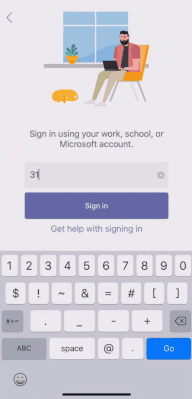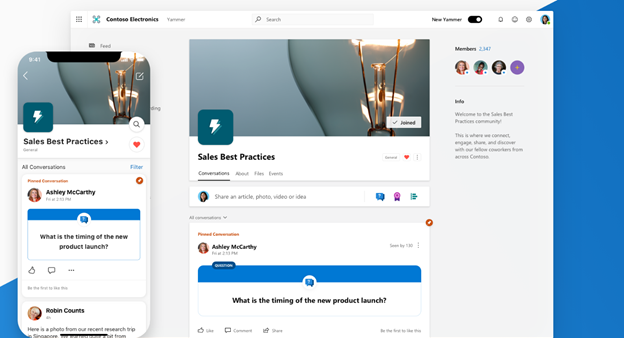Outside of email, the core applications that many organisations will be putting in front of their employees have all been on show at this year’s Ignite conference in the form of SharePoint, Teams and Yammer.
Common themes across most of the sessions have been AI, trust and security. However, Microsoft have also been on increasingly confident form in their positioning of these applications both in terms of what they deliver individually and how they support each other for a complete internal comms experience.
SharePoint
The announcements around SharePoint have been abundant this week and neatly summarised in a range of places, like this easy to consume list from Content and Code MVP, Chris O’Brien.
SharePoint’s confident position as the main content service gives it some real purpose in amongst it’s younger brethren. Both operating as the place where content is stored and front end in the form of the modern intranet experience.
Project Cortex brings new value and useful tools that organisations will be able to drive real benefit from moving aging content stored in on-premises SharePoint or file shares into SharePoint online. Finally a great reason to move it and decommission those servers!

Microsoft Teams
Teams continues to be a determined focus of effort with lots of new and interesting things happening across the board. Whilst the obvious areas of collaboration, chat and voice have had an outing this week, the volume is creeping up on Teams as a platform for applications and business processes. From tweaks and modifications to the user interface for discovery and management of the user interface for apps, to full on scenarios for hosted applications for firstline workers.
Quoting Jared Spataro, Microsoft’s Corporate VP, “Microsoft Teams is as important to the new Microsoft as Windows was to the old Microsoft”.
Teams role in the suite is as the hub for teamwork.

Yammer
Yammer is the place where people come together and communities are formed and managed.
Sweeping changes to the UI and much deserved functionality changes bring Yammer up to date, and I for one will be happy to never again be asked “Is Yammer dead?”
The Yammer app, soon to be available for Teams. shows a side-by-side scenario of “I’m working on a team project” and “I’m part of a business wide community”. Both valid and highly replicable scenarios, consider “I’m a project manager on a project” and “I’m part of a company wide project management community”.
The Yammer team at Microsoft have an excitable energy about them and are definitely one to watch!

Overall what’s been notable is the repeated emphasis on the individual strengths of the applications, enhancing their need for one another (thankfully with minimal reference to inner and outer loops!). and the shift to scenario based demonstrations favouring the application in question but always highlighting how the other applications could/should participate in the same scenario.